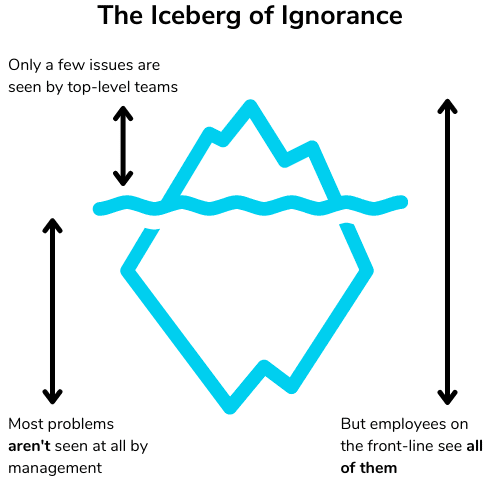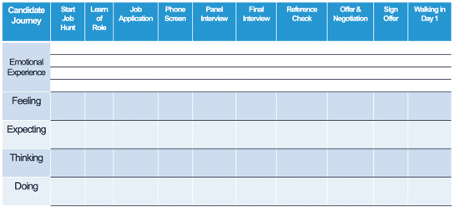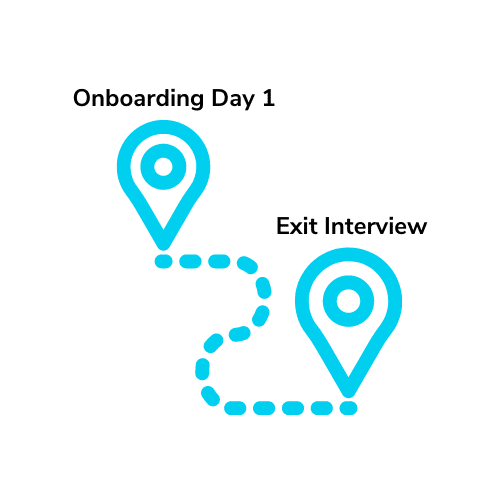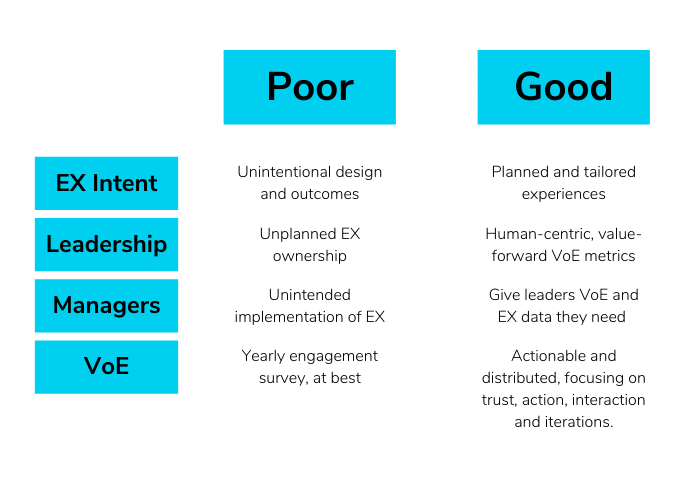How Do You Measure Employee Experience?

With Gil Cohen, Founder of Employee Experience Design
Why Measure Employee Experience?
“Not everything that can be counted counts. Not everything that counts can be counted.”
The ultimate business measurement of employee experience (EX) is company output. This output depends on the experience that everyone has working there. Some companies value profit, while others value their ‘mission’.
Therefore, if EX is getting worse, the ability to hit a high output will go down.
Improving EX brings out reactions and behaviours that enable success. There are only gains to be had from improving the Employee Experience, both human and organizational.
So, it’s crucial to build the Employee Experience with a focus on both the organization and its employees.
With organizational strategy it’s easy to find the direction and data. Above all, if the goals aren’t clear, then start there. Strategy has to be clear for it to be effective in driving decision making.

The data for the employee population has to come from them. When making decisions, leaders need to remember that user-centric decisions require the user to be involved in the process.
Have you ever noticed that chefs taste their food as they cook?
That is to say, leading an organization without employee feedback is a lot like cooking a complex dish without checking for taste along the way.

Voice of the Employee (VoE)
VoE gathers the opinions, wants, needs, preferences, etc. from employees to understand their Employee Experience.
This is crucial feedback that every organization needs: Most importantly, it’s the only real way to get an accurate measurement of EX. In short, without VoE leaders will continue to make decisions that will either be lucky or wrong.
Measuring Employee Experience
“Inspect what you expect.”
Organizations face a deficit of people data at the leadership level: The Iceberg of Ignorance.

The iceberg of ignorance states that all company problems are known to front line staff in comparison to higher-ups who ‘see’ less.
Studies into this state that top managers know only 4% of a company’s problems. Conversely, 100% of problems are known to front line workers.
These numbers are accurate for this study, but it’s important to remember that they vary wildly by company.
Companies like to say that they are people-centric, or that ‘people are our most important asset’, but they often make people decisions with minimal data: This can be fixed with genuine information from employees who trust management.
Digital Employee Experience with Survey Tools
The most common way to collect VoE is through Employee Surveys.
In order to get the most out of an Employee Survey, there are some best practices to follow, like using employee engagement survey platform. Importantly, these will allow you to make decisions that will get the best quality data with a more clear indication of what to do with it.
1) Trust Creates Quality Data
Trust impacts both the quality and quantity of info pulled in. Ultimately, without trust, all data will be ‘garbage in, garbage out’.
When employees don’t trust the survey, they won’t provide accurate information. They choose the answers they think leaders prefer, for instance, or on the other hand don’t respond at all.

2) Show Them the Value
Employees will only provide their full attention and opinion to a survey when they believe there is value in filling it out. After years of surveys that never do anything, they’re less likely to fill the survey out.
Ultimately, there needs to be value for them in doing the survey.
For example: Make the results public. If they don’t see the light of day, employees may think something is being hidden.
Next, take action. For instance, a common practice is to share “You said… we did…” with employees to explain the action that is taken.
Employee Journey Mapping

To clarify: Basing people decisions on yearly engagement scores is a lot like filling up your car’s gas tank only once it has already run out of gas.
It means you haven’t been paying attention to the leading indicators that let you know that your car (or your people) will be low on gas.
Putting a structure into place to gather better, more timely data helps to ensure user centric decisions that steer engagement and EX. Employee journey maps are a great way to do this.
An Employee Journey Map is a representation of an employee’s path with their company. It can be as broad as covering the entire career, or as specific as a set activity.

When making a journey map, it’s key to involve a diverse group: A range of opinions makes for more realistic VoE readings.
A journey map isn’t about having a completed journey. The process is about gathering the insights into what people are experiencing.
What is Employee Experience Management?
What is an Employee Experience strategy?
An Employee Experience Strategy is the plan to improve EX.
What is Employee Experience Management
Employee Experience Management is the day-to-day creation, assessment, and reaction to EX within the organization. Each step of the process is impacted by the way the company manages EX.

Roles and Responsibilities Within Employee Experience Management
The main groups involved in Employee Experience Management are Managers, HR/People Function, IT, Facilities, and Executives:
Managers
Managers are responsible for the broad majority of day-to-day EX. It’s up to them to power VoE initiatives and enable teams for success.
HR/People
HR have to set policies that are people-centric, not just organization-centric.
By listening to concerns, they can play a vital role in ensuring that the strategy is solid while also supporting the needs of others within the management team.
An effective HR team is setting the other groups up for success through training, advice, support, and consultation.
IT
IT ensures that the internal applications and tools are working and providing a functioning, engaging EX.
As the workforce becomes more digital, it’s important that IT practices are aligned with people’s needs and EX.
Facilities
Facilities create and adjust the work environment to ensure that people are safe, secure, and organized in a way that supports productivity. (e.g. flow, noise, light, areas to meet, etc.)
Executives
Executives must make decisions that help their people feel more confident in the direction of the company and know what they can expect.
Providing support and resources to others to achieve the Employee Experience Strategy is vital for success.
Employee Experience Model

The Employee Experience Model is built on a spectrum of Four Dimensions: Intent, Senior Leadership, Managers, and Voice of Employee:
Intent
Intent is measured by the intentionality of the organization with its handling of EX.
Senior Leadership
Senior Leadership has an impact on the Employee Experience – negative or positive –in both the short and the long term. In order to build a great EX, Senior Leadership needs to be consistent in making values-based decisions that integrate VoE
Managers
Managers need to be capable and effective when creating EX. This includes their ability to create an environment in which their team can thrive, the creation of a psychologically safe space, and the integration of feedback into people decisions.
Voice of Employee
Voice of Employee has to be collected and factored into decisions.

Examples of Best Practices in the Workplace
‘Treat others the way they would like to be treated’
Many cultures around the world have some form of the Golden Rule, “treat others the way you would like to be treated.”
When it comes to EX, the Golden Rule is insufficient and will lead you down the wrong path. Best practices for EX need to follow the Platinum Rule, “treat others the way they would like to be treated.”
Here are two best practices and examples that demonstrate this:
Strategic Best Practice Example – The Employee Experience Function at Airbnb
The strategy created by Mark Levy at Airbnb helped pioneer a new way of devising a People Strategy.
Taking lessons learned from their customer experience function, Airbnb created an Employee Experience function. Levy was able to redefine how the Employee Experience was created by bringing together previously separate functions.
A succinct summary of Levy and Airbnb’s experiences can be found here. Jacob Morgan provided a summary of the key lessons learned to help others take the key requirements to create a great EX.
Tactical Best Practice Example – Revamped Onboarding in a Small IT Firm
The company was rebuilding its Onboarding journey and used an Employee Journey Map to structure.
This journey they mapped started with the job application and finished with the person being comfortable within the company.
One of the insights that was discovered about their specific process was a gap in touch points between the time a person signs their employment agreement and their start date.
Feedback from individuals who had recently been through the onboarding process showed that this caused a dip in emotions and concerns about the decision to join the company. This feedback provided greater insight into why the company had faced the issue of people backing out of their contract prior to their start date.
In response to this, the team worked together to come up with ideas that would resolve the issue. Once the team agreed on changes, they implemented them quickly with an eye toward gathering feedback.
The feedback came in quickly that this adjustment reduced stress, improved connection with the company, and increased retention.
About the author
Gil Cohen has been helping organizations with Employee Experience for over two decades. His combined background in psychology and business helps him understand both the individual and organizational aspects of the workplace helping companies design employee experiences that improve both the outcomes of the organization and the lives of its employees.








